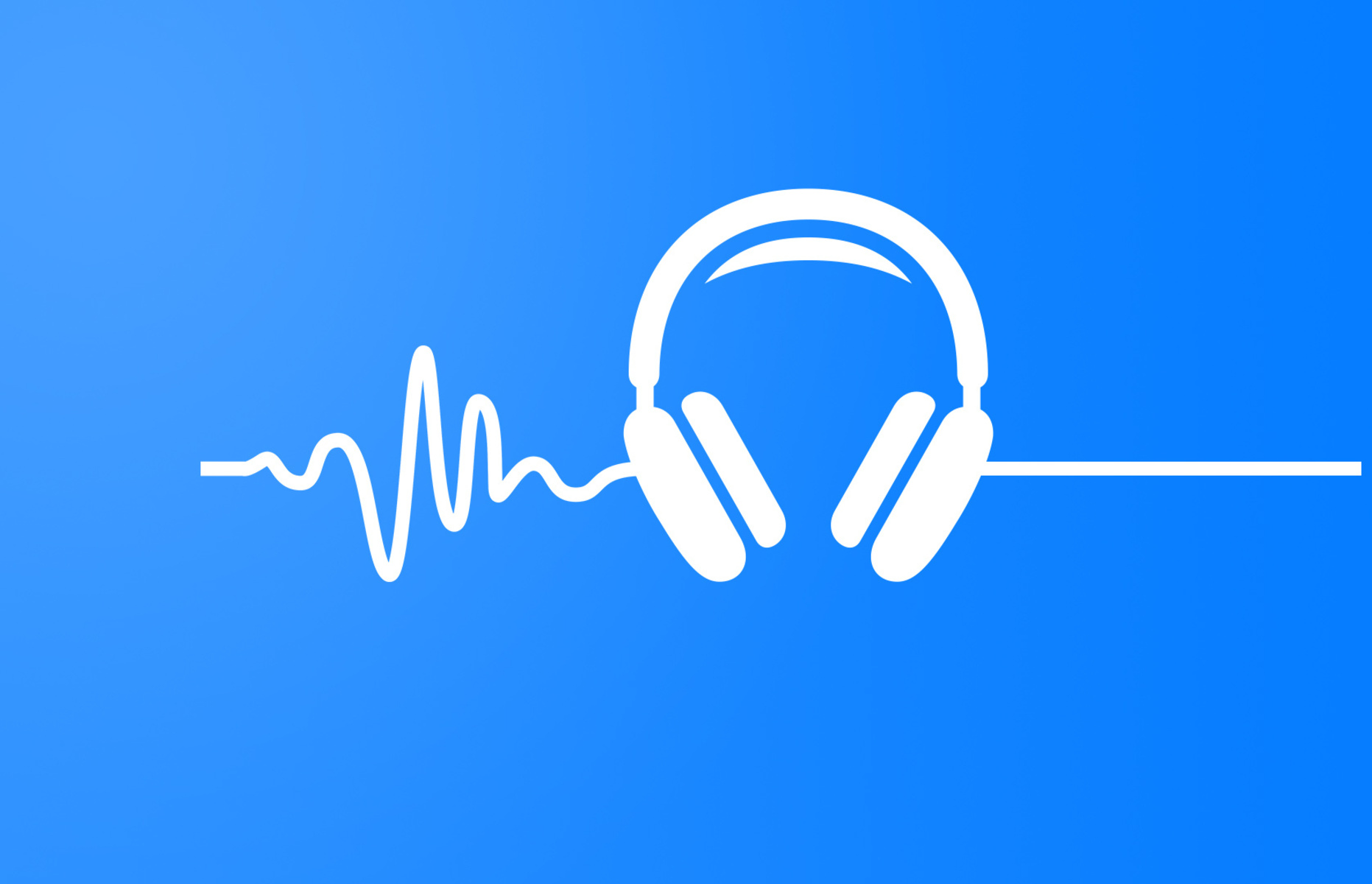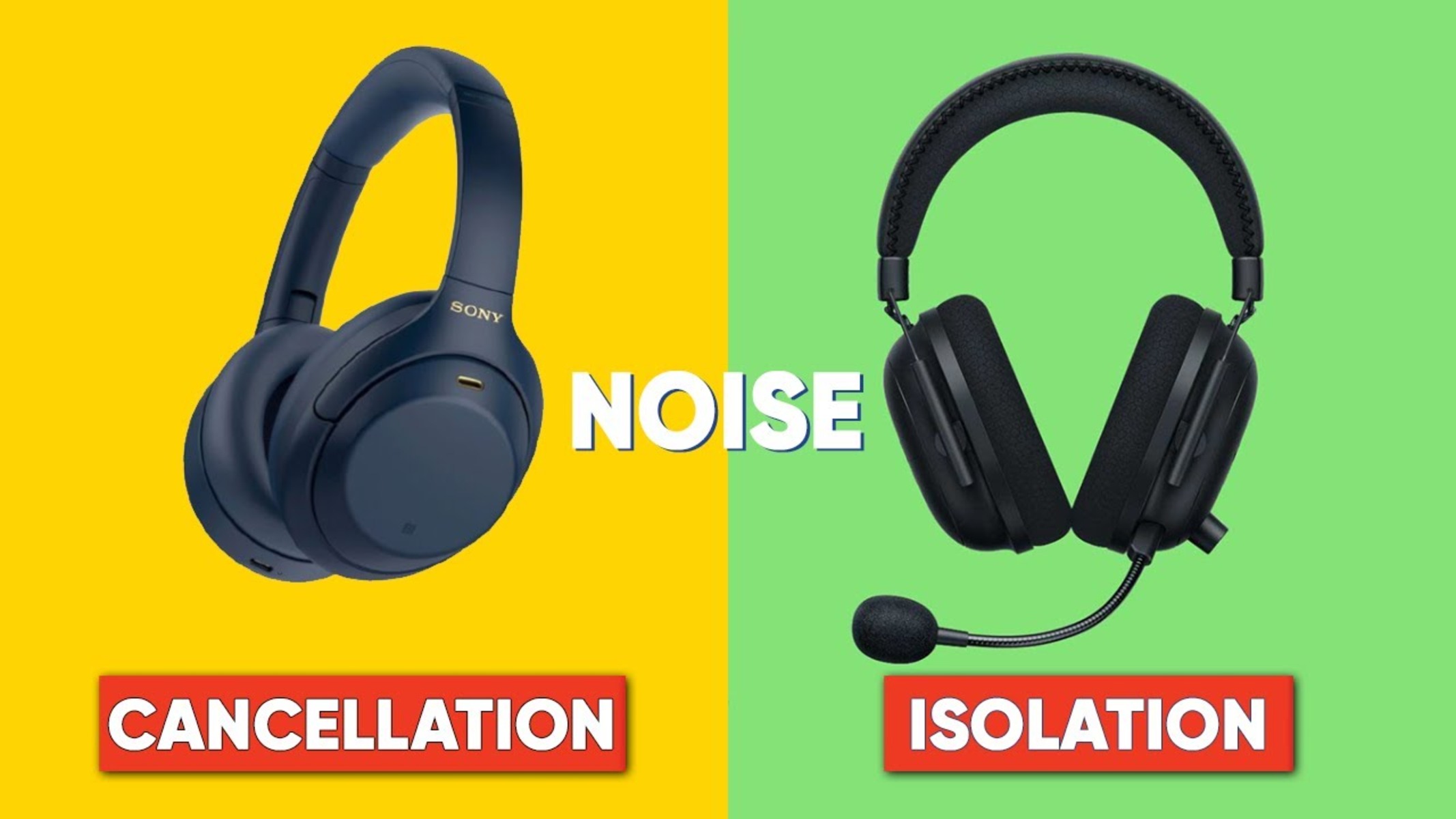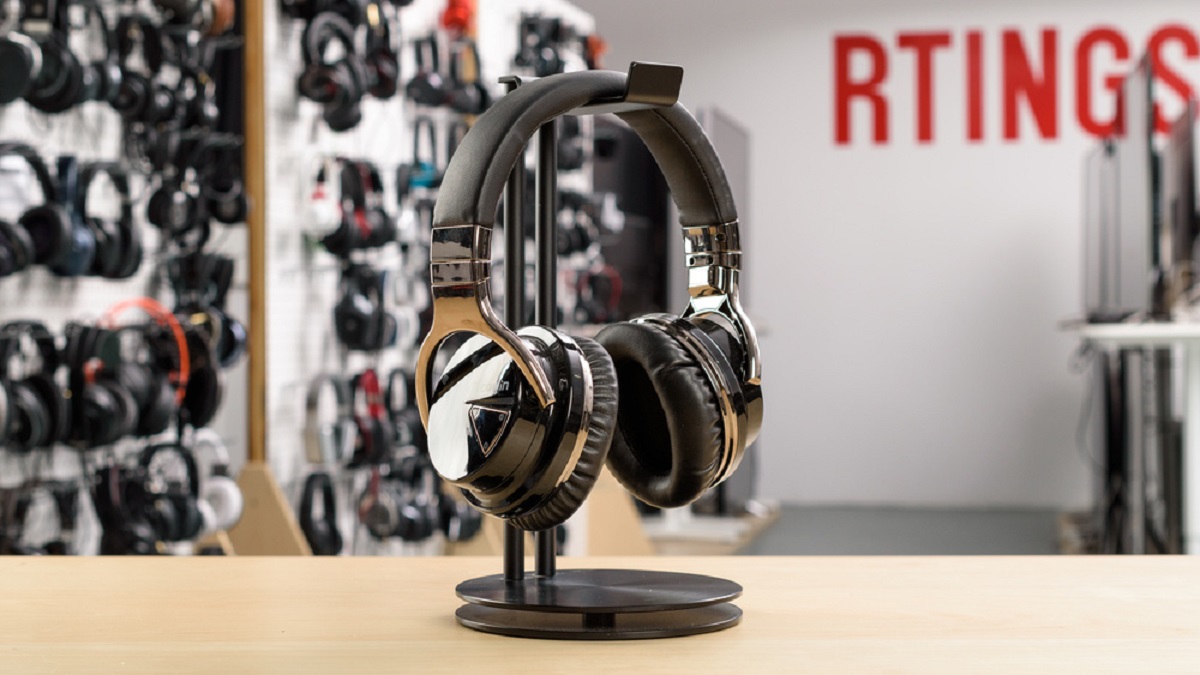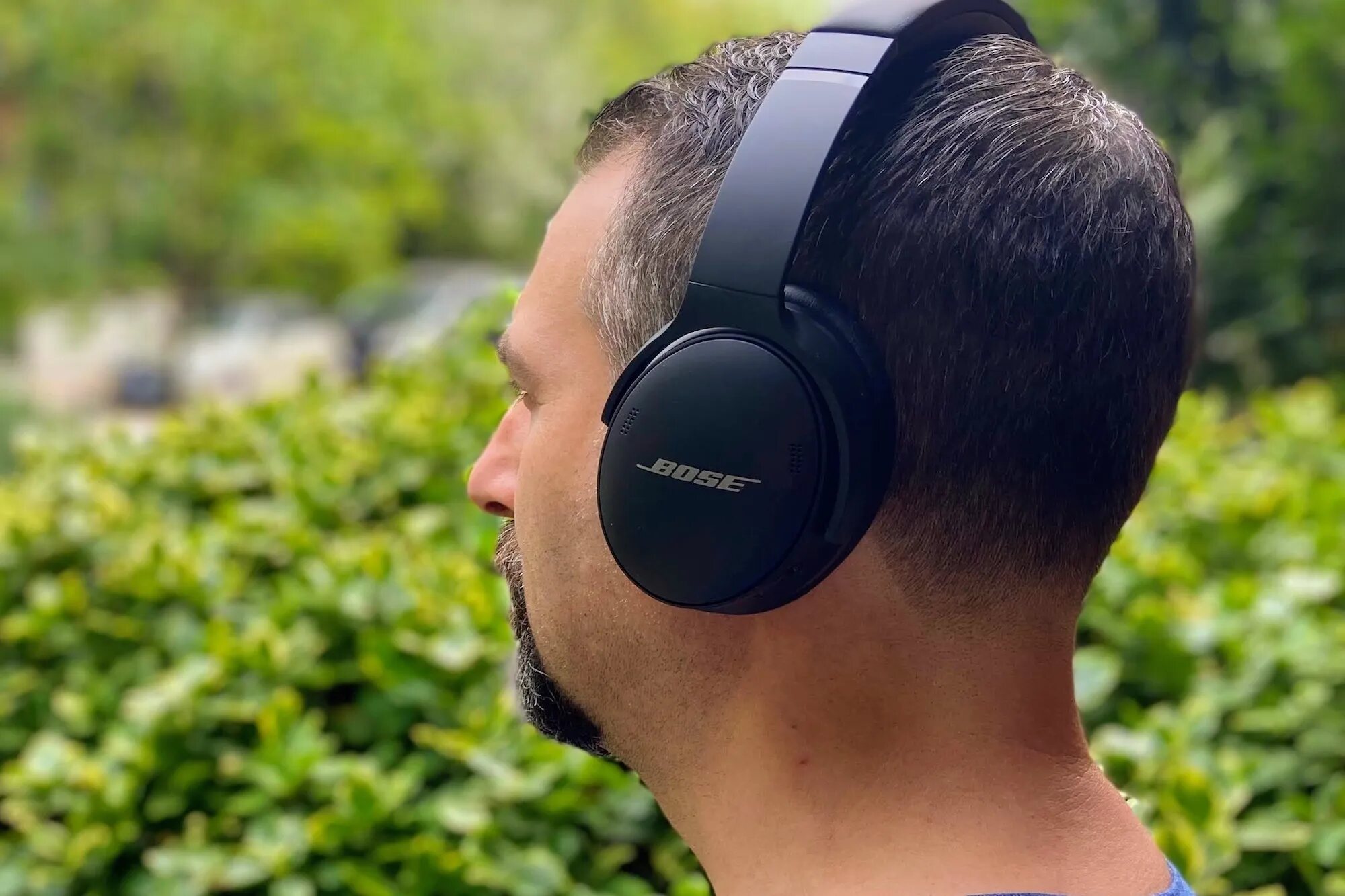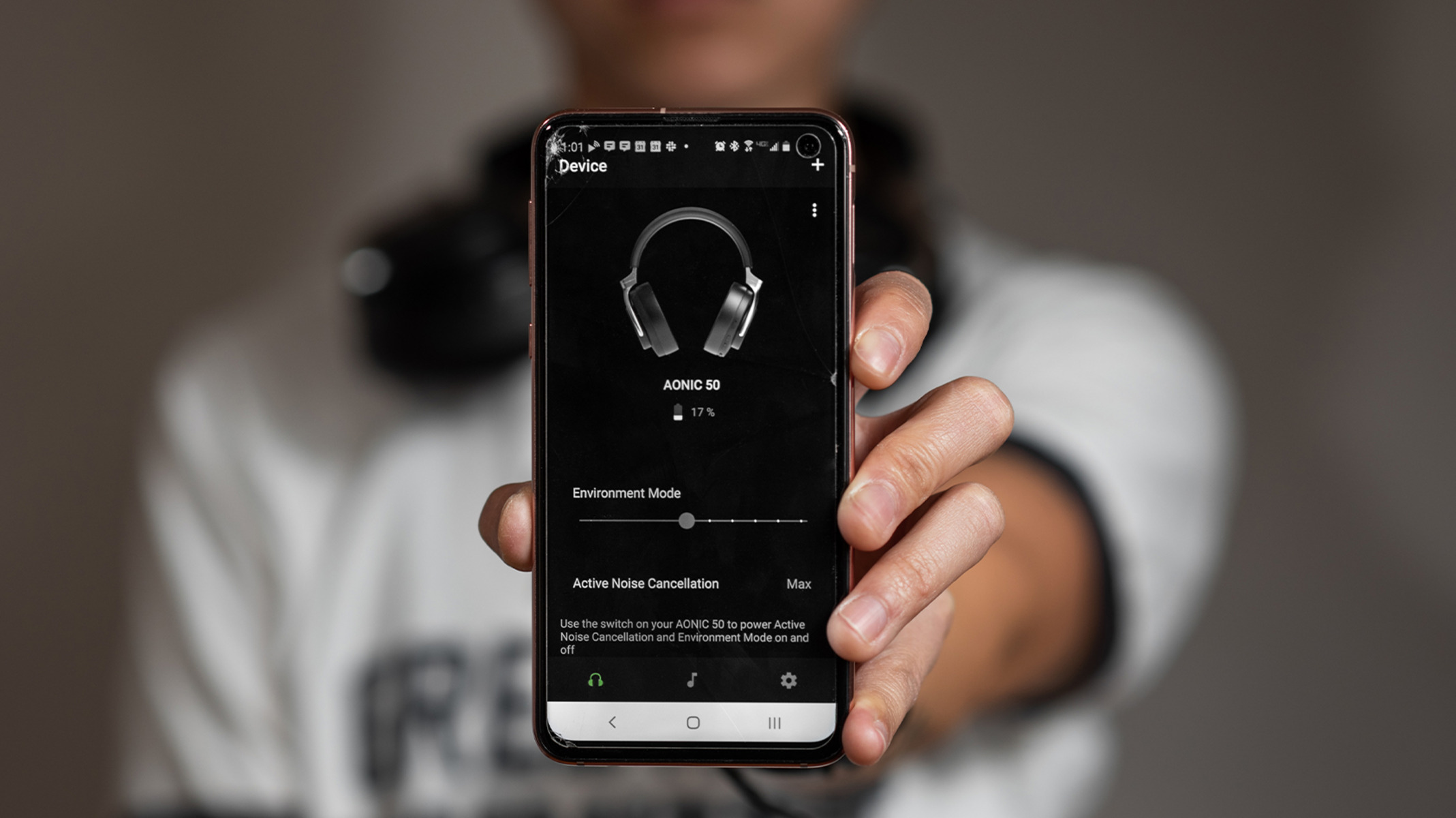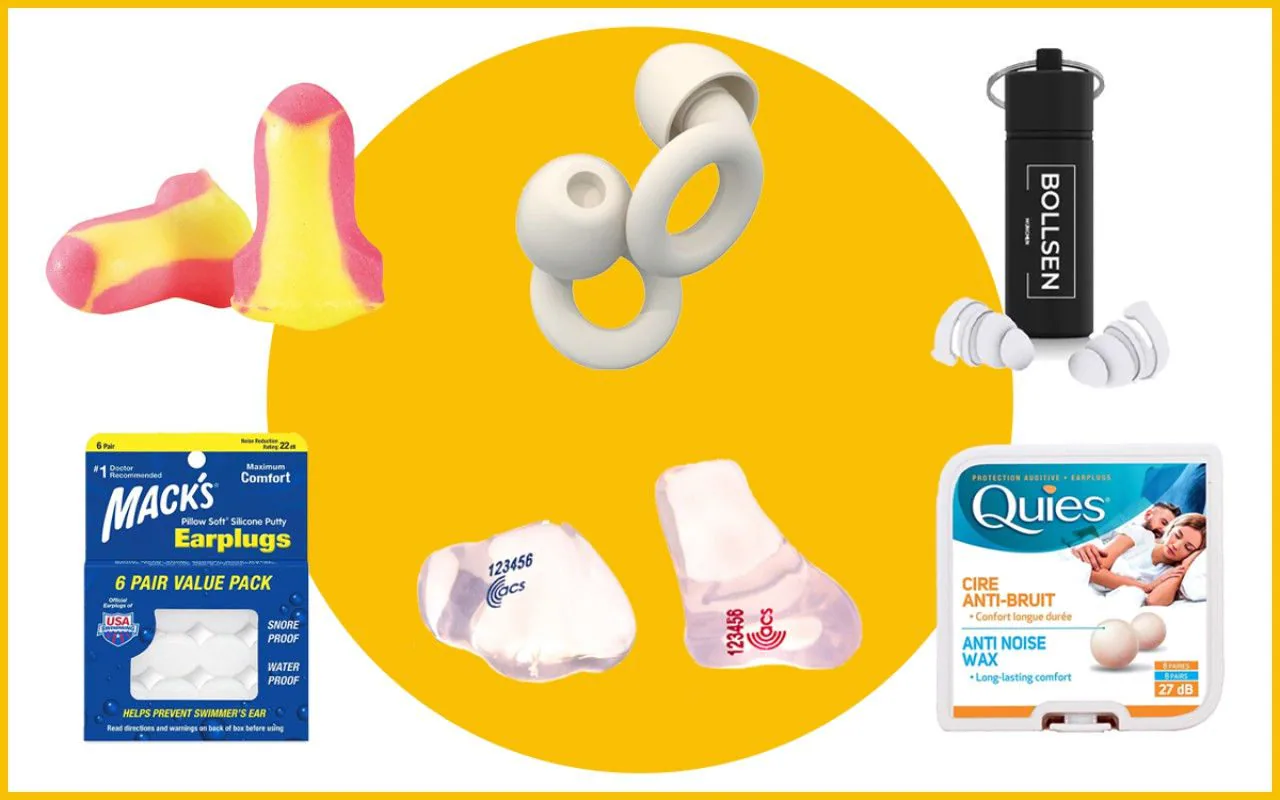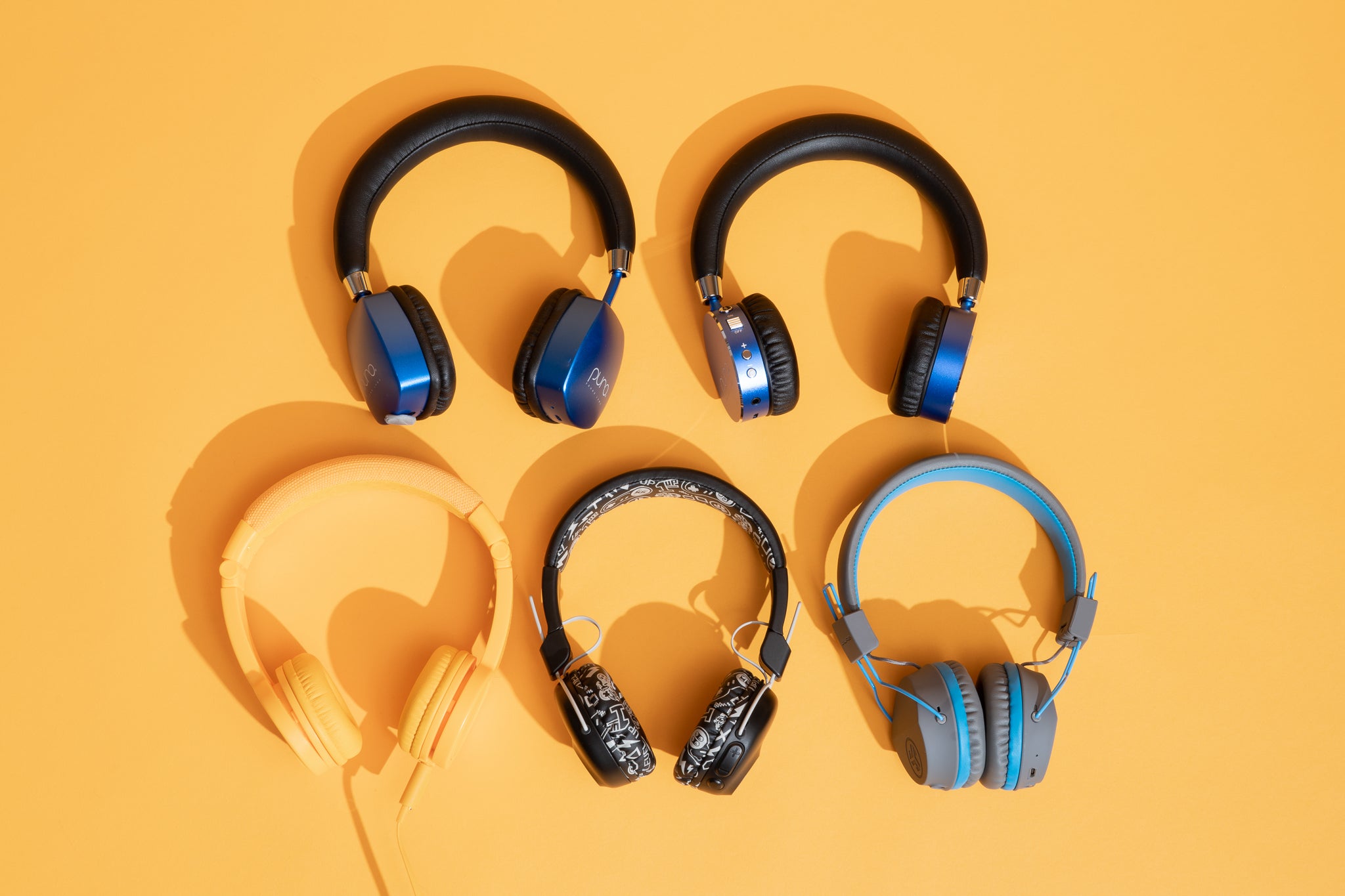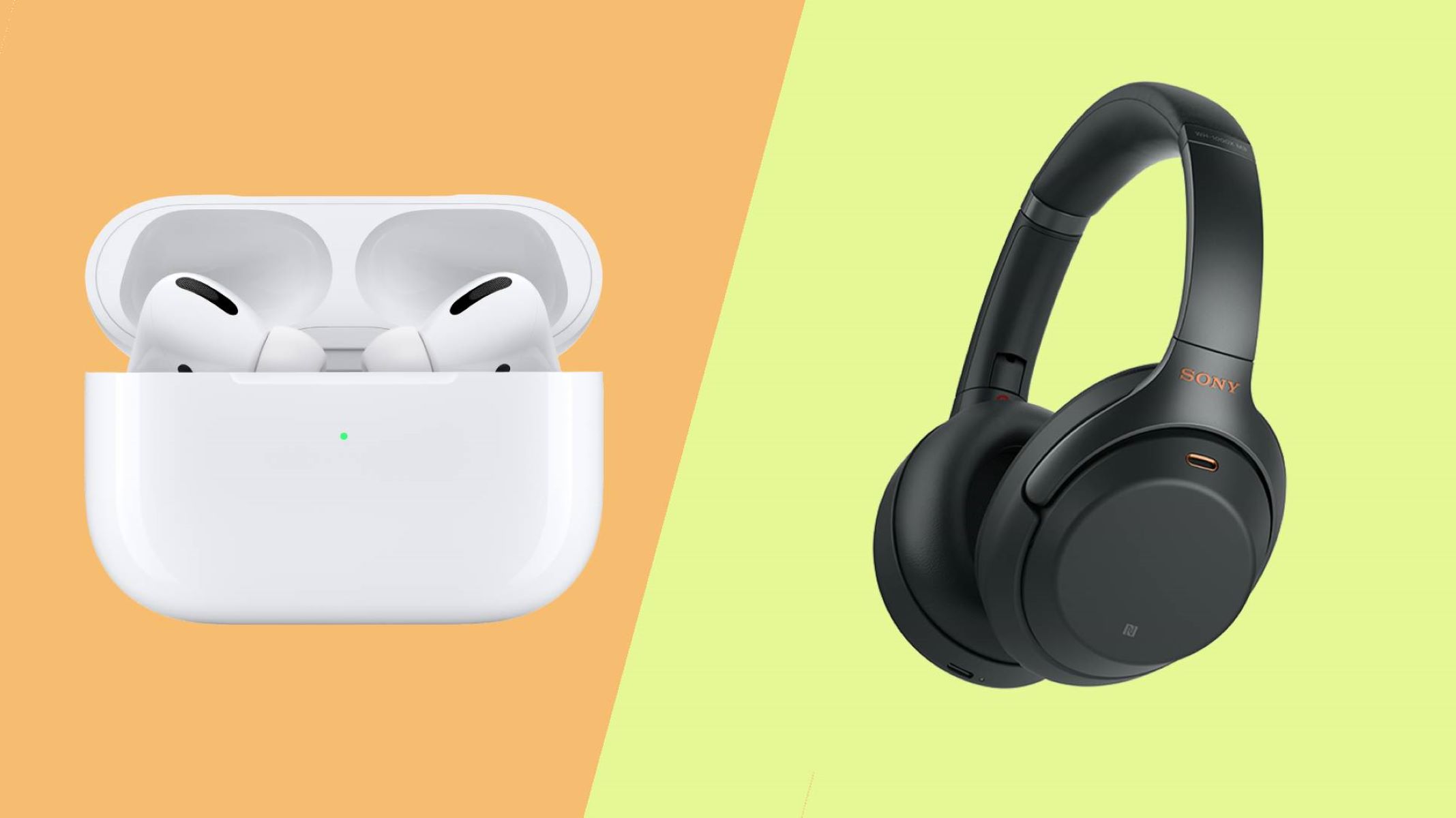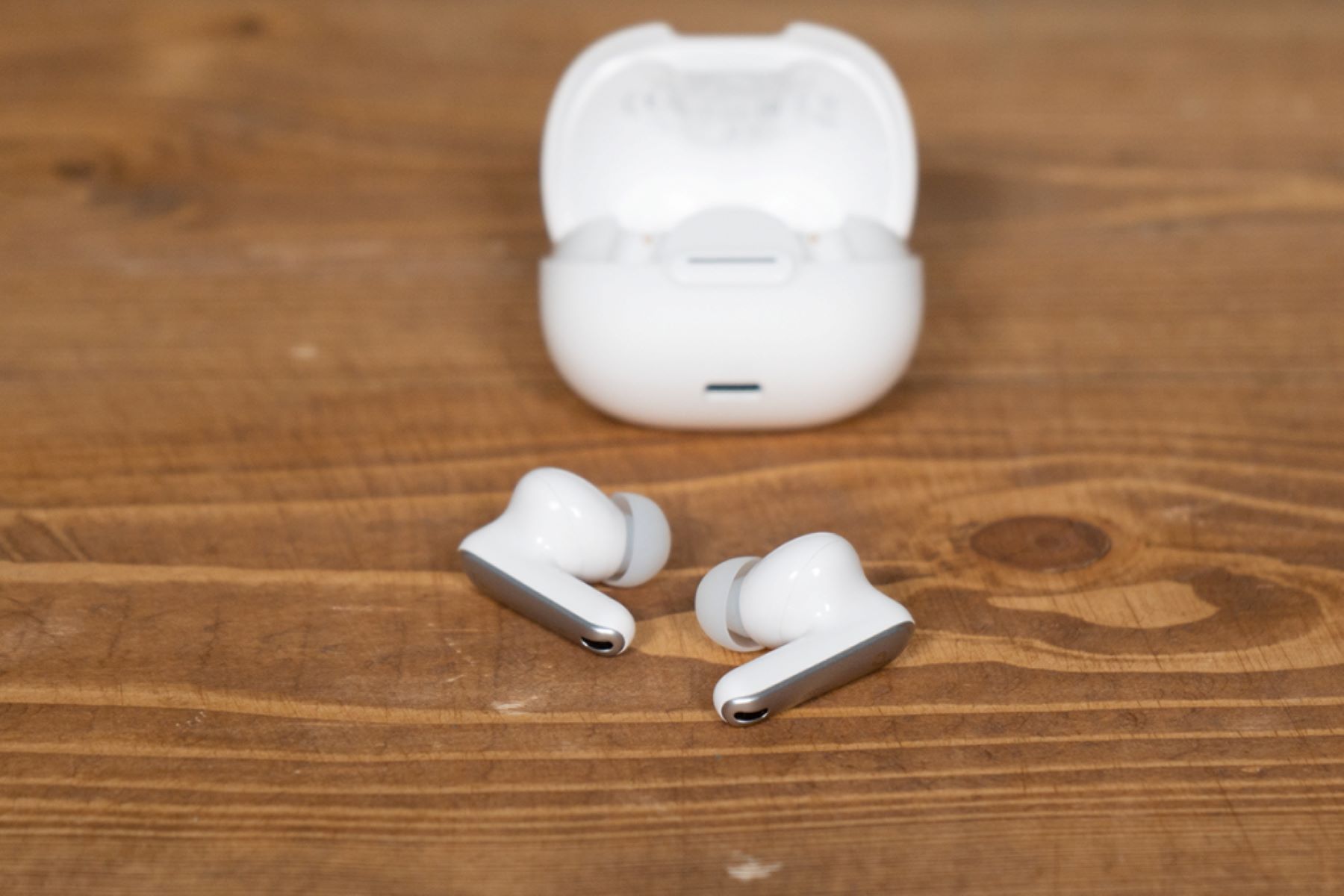Introduction
Noise cancellation technology has become increasingly popular, offering a way to tune out unwanted ambient sounds and immerse ourselves in our own audio experience. Whether you are using noise-canceling headphones, earbuds, or even a smartphone app, the expectation is clear – to enjoy a peaceful and uninterrupted listening experience.
However, what happens when your noise cancellation feature fails to work as expected? It can be frustrating and disappointing, leaving you wondering why this advanced technology is failing you. In this article, we will explore some possible reasons why your noise cancellation may not be working and provide some troubleshooting tips to help you resolve the issue.
Before we dive into the potential causes, it’s essential to understand how noise cancellation works. This technology utilizes built-in microphones to pick up external sounds, analyzing and generating equal but opposite sound waves to cancel out the incoming noise. By doing so, it creates a quieter environment for you to enjoy your audio content.
Now, if you find that even with your noise-canceling headphones or device turned on, you’re still hearing background noise, there are several factors that could be contributing to the issue. Let’s take a closer look at some common reasons why your noise cancellation may not be functioning correctly.
Background on noise cancellation technology
Noise cancellation technology has revolutionized the way we engage with our audio devices. It allows us to block out unwanted external sounds and focus solely on our chosen audio content. Understanding the fundamentals of noise cancellation technology can help us troubleshoot any issues we may encounter.
The concept of noise cancellation dates back to the early 20th century, but it wasn’t until the 1980s that it started to become commercially available for consumer electronics. The initial implementation of noise cancellation technology focused mainly on aviation headsets, where pilots needed to communicate effectively in noisy cockpit environments.
The technology works by utilizing microphones located on the surface of the headphones or earbuds to capture the external sound waves. Once the noise is detected, the headphones generate an “anti-noise” signal with the same amplitude but opposite phase to cancel out the unwanted noise. This method is known as active noise cancellation (ANC), and it helps create a quieter listening environment.
There are different types of noise cancellation, including feedforward, feedback, and hybrid systems. Feedforward noise cancellation involves microphones placed outside the ear cup, capturing external noise before it reaches the listener’s ear. Feedback noise cancellation, on the other hand, uses microphones located inside the ear cup to cancel out noise that has already reached the listener’s ear. Hybrid systems combine elements of both feedforward and feedback technologies for improved noise cancellation performance.
Advancements in noise cancellation technology have also led to the development of adaptive noise cancellation. This feature uses algorithms to analyze the ambient noise and adjust the anti-noise signal accordingly, providing even more effective noise reduction in various environments.
Additionally, many noise-canceling devices offer different levels of noise cancellation, allowing users to adjust the intensity of the cancellation effect based on their preferences and the surrounding noise levels.
Now that we have a better understanding of how noise cancellation technology works, let’s explore some reasons why your noise cancellation feature may not be functioning correctly.
Possible reasons why noise cancellation is not working
While noise cancellation technology has come a long way, there are instances when it may not function as expected. Here are some potential reasons why your noise cancellation feature may not be working:
- Incorrect placement of the headphones: Noise cancellation technology relies on capturing external sounds with the built-in microphones. If the headphones are not properly positioned on your ears, the microphones may not be able to pick up the ambient noise effectively, resulting in inadequate noise cancellation.
- Low battery or power issues: Noise cancellation requires power to operate. If your headphones or device have a low battery or power level, it can impact the performance of the noise cancellation feature. Ensure that your device is fully charged or replace the batteries if necessary.
- Insufficient volume or audio settings: Noise cancellation works in conjunction with your audio playback. If the volume is too low, or if the audio settings are not optimized, it can affect the effectiveness of noise cancellation. Adjust the volume and ensure that the audio settings are suitable for noise cancellation.
- External noise interference: Noise cancellation technology is designed to cancel out external sounds, but it may struggle to eliminate certain types of noise, such as high-frequency sounds or sudden loud noises. In such cases, noise cancellation may not be fully effective, and you may still perceive some background noise.
- Defective or damaged noise cancellation components: Like any electronic device, noise-canceling headphones or devices can experience component failure. If the microphones or other components responsible for noise cancellation are defective or damaged, it can result in subpar noise cancellation performance.
- Compatibility issues with devices: Noise cancellation technology may not be compatible with all devices. Ensure that your headphones or noise-canceling device are compatible with the audio source you are using. Some devices may require specific settings or firmware updates for noise cancellation to work correctly.
By identifying the potential reasons why your noise cancellation may not be working, you can take appropriate steps to troubleshoot and resolve the issue. In the next section, we will provide some troubleshooting tips to help you get your noise cancellation feature back on track.
Incorrect placement of the headphones
One common reason why noise cancellation may not be working as expected is due to incorrect placement of the headphones. Noise cancellation technology relies on capturing external sounds through the built-in microphones and generating anti-noise signals to cancel them out. If the headphones are not properly positioned on your ears, the microphones may not be able to pick up the ambient noise effectively, resulting in inadequate noise cancellation.
To ensure proper placement of your noise-canceling headphones, follow these tips:
- Position the ear cups correctly: Ensure that the ear cups completely cover your ears. The headphones should create a seal around your ears to maximize noise isolation and allow the microphones to capture external sounds accurately.
- Adjust the headband: Check the fit of the headband to ensure that it is snug but not too tight. The headphones should feel comfortable and secure on your head, maintaining the proper position of the ear cups.
- Avoid obstructions: Make sure that there are no objects, such as hats or hair, blocking the ear cups. Any obstructions can interfere with the noise cancellation process and compromise its effectiveness.
- Experiment with different sizes and styles: Different headphones come in various sizes and styles to accommodate different ear shapes and sizes. If you find that the noise cancellation is not working well with your current headphones, consider trying different sizes or styles to find a better fit.
By ensuring the correct placement of your headphones, you can enhance the performance of the noise cancellation feature and enjoy a more immersive listening experience. If the issue persists after adjusting the placement of the headphones, there may be other factors contributing to the problem, which will be addressed in the following sections.
Low battery or power issues
Another common reason why noise cancellation may not be working is due to low battery or power issues. Noise cancellation technology requires power to operate effectively. If your headphones or noise-canceling device has a low battery or power level, it can significantly impact the performance of the noise cancellation feature.
To address low battery or power issues, consider the following steps:
- Check the battery level: If your noise-canceling headphones have a built-in rechargeable battery, ensure that it is adequately charged. Consult the user manual or check the device’s settings to determine the battery level. If the battery is low, charge it using the provided charging cable or replace the batteries if your headphones use disposable batteries.
- Verify the power source: If your noise-canceling device relies on power from an external source, such as an audio player or smartphone, make sure that the source device has sufficient power. Connect it to a power outlet or charge the device if necessary. Insufficient power from the source device can affect the performance of noise cancellation.
- Consider power-saving modes: Some noise-canceling headphones have power-saving modes that automatically adjust the noise cancellation feature based on battery level. Check if your headphones have this feature and enable it if necessary. However, keep in mind that this may slightly compromise the noise cancellation performance to conserve battery life.
- Replace old batteries: If your noise-canceling headphones use disposable batteries, ensure that they are not worn out or expired. Replace them with fresh batteries to optimize the performance of the noise cancellation feature.
By addressing low battery or power issues, you can restore the full functionality of your noise cancellation feature. If the problem persists even after ensuring sufficient power, there may be other factors contributing to the issue, which will be discussed in the subsequent sections.
Insufficient volume or audio settings
Insufficient volume or improper audio settings can affect the effectiveness of noise cancellation. Noise cancellation technology works in conjunction with your audio playback to create a more immersive listening experience. If the volume is too low or the audio settings are not optimized, it can impact the overall performance of the noise cancellation feature.
To address insufficient volume or audio settings, consider the following steps:
- Adjust the volume: Ensure that the volume level on your audio device, such as a smartphone, tablet, or computer, is set to an adequate level. If the volume is too low, it may not provide enough sound for the noise cancellation technology to work effectively. Increase the volume to a comfortable level that allows you to enjoy your audio content while still benefiting from noise cancellation.
- Check the equalizer settings: Many audio devices have equalizer settings that allow you to customize the audio output. Ensure that the equalizer settings are optimized for the type of content you are listening to. Experiment with different presets or manually adjust the equalizer to find the settings that complement the noise cancellation feature.
- Consider using high-quality audio files: Low-quality audio files or streaming services that compress audio heavily may not provide the necessary detail and dynamics for noise cancellation to work optimally. Try using high-quality audio files or streaming services that offer higher bit rates to enhance the overall audio experience and maximize the benefits of noise cancellation.
- Use the recommended audio source: Some noise-canceling headphones or devices may perform better with certain audio sources. Consult the user manual or manufacturer’s recommendations to ensure that you are using the recommended audio source for the best noise cancellation performance.
By adjusting the volume and optimizing the audio settings, you can improve the overall performance of the noise cancellation feature. If the issue persists even after modifying the volume and audio settings, there may be other factors contributing to the problem, which will be discussed in the following sections.
External noise interference
External noise interference can significantly impact the performance of noise cancellation technology. While noise cancellation is designed to suppress external sounds, certain types of noise or specific environments may pose challenges to its effectiveness.
Here are some factors related to external noise interference that may affect your noise cancellation:
- High-frequency sounds: Noise cancellation technology is more effective at canceling out low-frequency sounds such as the hum of an air conditioner or the rumble of a vehicle engine. However, it may struggle to fully eliminate high-frequency sounds like a ringing phone or squeaking brakes, resulting in reduced noise cancellation performance.
- Sudden loud noises: Noise cancellation works by analyzing and generating anti-noise signals to cancel out external sounds in real-time. However, sudden loud noises, like a loud clap or an explosion, may occur faster than the technology can adjust. In such cases, the noise cancellation may not be able to suppress these sudden noise bursts effectively.
- Open-back headphones: Open-back headphones are designed to allow some sound to pass through the ear cups, providing a more natural sound experience. However, this design also means that noise cancellation may not be as effective, as external noise can enter through the open-back design.
- Environmental noise: Noise cancellation technology may struggle to fully cancel out noise in certain environments with constant or unpredictable ambient sounds, such as crowded cafes, construction sites, or windy outdoor areas. In such cases, while noise cancellation can still provide some reduction in noise, it may not achieve complete isolation from the external environment.
While external noise interference cannot be completely eliminated, awareness of these factors can help manage expectations of noise cancellation performance. Realizing the limitations in certain situations can lead to a better understanding of why noise cancellation may not be working optimally.
In the next section, we will explore other potential reasons for noise cancellation issues and provide troubleshooting tips to help you resolve them.
Defective or damaged noise cancellation components
One possible reason for noise cancellation not working as expected is the presence of defective or damaged components within the headphones or noise-canceling device. Like any electronic device, noise-canceling headphones can experience component failure, which can directly impact the performance of the noise cancellation feature.
Here are some considerations related to defective or damaged noise cancellation components:
- Microphone malfunction: The microphones in noise-canceling headphones or devices play a crucial role in capturing external sounds for noise cancellation. If the microphones are faulty or malfunctioning, they may not accurately pick up the ambient noise, resulting in decreased noise cancellation performance.
- Internal wiring issues: Any internal wiring problems, such as loose connections or damaged cables, can disrupt the proper functioning of noise cancellation components. These issues may lead to inconsistent noise cancellation or a complete failure of the feature.
- Hardware damage: Physical damage to the headphones or noise-canceling device, such as a drop or impact, can cause damage to the internal components responsible for noise cancellation. This damage may prevent them from functioning optimally or at all.
- Manufacturing defects: In rare cases, manufacturing defects in the noise-canceling headphones or device may impact the performance of noise cancellation. These defects can range from poor component quality to improper assembly, resulting in subpar noise cancellation functionality.
If you suspect that the noise cancellation feature is not working due to defective or damaged components, consider the following steps:
- Check for warranty coverage: If your headphones or noise-canceling device is still under warranty, contact the manufacturer or retailer to inquire about repair or replacement options. Defective or damaged components may be covered under the warranty terms.
- Perform a reset: Sometimes, a simple reset can resolve software-related issues that may be hindering the noise cancellation feature. Refer to the user manual or manufacturer’s instructions on how to perform a reset for your specific device.
- Seek professional repair: If the issue persists and you are unable to resolve it on your own, consider seeking professional repair services. A qualified technician can diagnose and repair any defective or damaged components that are affecting the noise cancellation functionality.
By addressing any potential defective or damaged components, you can potentially restore the full functionality of the noise cancellation feature. If the issue persists even after these precautions, there may be other factors contributing to the problem, which we will explore in the following sections.
Compatibility issues with devices
Compatibility issues with devices can be a possible reason why noise cancellation is not working as expected. While noise-canceling headphones or devices are designed to work with a variety of audio sources, there may be instances where compatibility issues arise, impacting the performance of the noise cancellation feature.
Consider the following factors related to compatibility issues:
- Device-specific compatibility: Some noise-canceling headphones or devices may have specific compatibility requirements with certain audio sources. For example, certain headphones may work optimally with specific smartphones or audio players. Check the user manual or manufacturer’s website to ensure that your headphones or device are compatible with the audio source you are using.
- Firmware updates: Manufacturers often release firmware updates to enhance the performance and compatibility of their noise-canceling devices. Check if there are any available firmware updates for your headphones and follow the instructions provided by the manufacturer to update the firmware. This can help address compatibility issues and improve noise cancellation performance.
- Audio source settings: Ensure that the audio source you are using is configured correctly. Adjust the audio settings on your device to enable noise cancellation or select the appropriate audio output settings that are compatible with your noise-canceling headphones. In some cases, specific audio settings, such as an equalizer or surround sound, may interfere with the noise cancellation feature.
- Bluetooth connectivity: If you are using wireless noise-canceling headphones, ensure that the Bluetooth connection between the headphones and the audio source is stable. Inconsistent or weak Bluetooth connections can affect noise cancellation performance. Try re-pairing your headphones with the audio source or moving closer to the source device to establish a stable connection.
- Third-party apps or accessories: Using third-party apps or accessories with noise-canceling devices may introduce compatibility issues. These apps or accessories may not fully integrate with the noise cancellation feature or may disrupt the communication between the device and headphones. Consider removing or disabling any third-party apps or accessories to evaluate if they are causing compatibility issues.
By ensuring compatibility and addressing any potential compatibility issues, you can optimize the performance of noise cancellation. If the issue persists even after taking these steps, there may be other factors contributing to the problem, which we will discuss further in the troubleshooting section.
Troubleshooting tips for fixing noise cancellation issues
If you are experiencing issues with your noise cancellation feature, here are some troubleshooting tips to help you resolve the problem:
- Restart your headphones or device: Sometimes, a simple restart can resolve temporary software glitches that may be affecting the noise cancellation feature. Turn off your headphones or device, wait a few seconds, and then power it back on to see if the issue is resolved.
- Update firmware or software: Check if there are any available firmware or software updates for your noise-canceling headphones or device. Manufacturers often release updates that address bugs, improve performance, and enhance compatibility. Follow the instructions provided by the manufacturer to update the firmware or software and see if it resolves the noise cancellation issues.
- Reset your headphones or device: Performing a reset can restore the device to its default settings, which can help resolve any software-related issues that may be affecting noise cancellation. Refer to the user manual or manufacturer’s instructions on how to perform a reset for your specific headphones or device.
- Try noise cancellation in different environments: Noise cancellation performance can vary depending on the environment. Test the noise cancellation feature in different settings, such as a quiet room, a noisy coffee shop, or during your commute, to see if there are any noticeable differences. This can help you determine if the issue is specific to certain environments or if it persists across different scenarios.
- Perform a software or audio source reset: If the noise cancellation feature is not working with a specific audio source, try resetting the software settings on that source device or selecting a different audio source altogether. This can help eliminate any compatibility or configuration issues that may be hindering noise cancellation.
- Clean your headphones or earbuds: Accumulated dirt, debris, or earwax on the ear cups or earbuds can block the noise-canceling microphones and impact the performance of noise cancellation. Clean your headphones or earbuds as per the manufacturer’s instructions using a soft cloth or a cleaning solution specifically designed for electronics.
- Contact customer support: If you have tried the above troubleshooting tips and the noise cancellation issues persist, it may be time to reach out to the customer support of your headphones or device manufacturer. They can provide further assistance, diagnose any potential hardware issues, or guide you through additional troubleshooting steps.
Remember, troubleshooting tips may vary depending on the specific headphones or noise-canceling device you are using. Refer to the user manual or contact customer support for your particular product for more tailored troubleshooting guidance.
By following these troubleshooting tips, you can identify and resolve common noise cancellation issues, allowing you to fully enjoy the benefits of noise cancellation technology.
Conclusion
Noise cancellation technology plays a significant role in providing a serene and immersive listening experience, but it can be frustrating when it fails to work as expected. In this article, we explored some possible reasons why your noise cancellation may not be functioning correctly and provided troubleshooting tips to help you resolve the issue.
We discussed various factors that can impact noise cancellation, including incorrect headphone placement, low battery or power issues, insufficient volume or audio settings, external noise interference, defective or damaged noise cancellation components, and compatibility issues with devices. By understanding these factors, you can better identify the root cause of the problem and take appropriate steps to address it.
Additionally, we provided troubleshooting tips, including restarting your headphones or device, updating firmware or software, resetting your device, testing noise cancellation in different environments, performing a software or audio source reset, cleaning your headphones or earbuds, and contacting customer support for further assistance. These troubleshooting tips can help you identify and resolve common noise cancellation issues.
Remember, noise cancellation technology is not infallible, and there may be limitations and situations where it may not be fully effective. It is essential to manage your expectations and understand that external factors, such as high-frequency sounds or sudden loud noises, can pose challenges to noise cancellation performance.
By following the troubleshooting tips provided in this article and seeking further assistance if needed, you can optimize the performance of your noise cancellation feature and enjoy a more immersive and uninterrupted listening experience.







